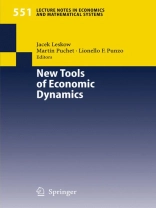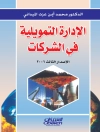New Tools of Economic Dynamics gives an introduction and overview of recently developed methods and tools, most of them developed outside economics, to deal with the qualitative analysis of economic dynamics. It reports the results of a three-year research project by a European and Latin American network on the intersection of economics with mathematical, statistical, and computational methods and techniques. Focusing upon the evolution and manifold structure of complex dynamic phenomena, the book reviews and shows applications of a variety of tools, such as symbolic and coded dynamics, interacting agents models, microsimulation in econometrics, large-scale system analysis, and dynamical systems theory. It shows the potential of a comprehensive analysis of growth, fluctuations, and structural change along the lines indicated by pioneers like Harrod, Haavelmo, Hicks, Goodwin, Morishima, and it highlights the explanatory power of the qualitative approach they initiated.
สารบัญ
Large Interactive Economies.- Modeling a Large Number of Agents by Types: Models as Large Random Decomposable Structures.- An ABM-Evolutionary Approach: Bilateral Exchanges, Bargaining and Walrasian Equilibria.- A Genetic Algorithms Approach: Social Aggregation and Learning with Heterogeneous Agents.- Structure and Macroeconomic Performance: Heterogeneous Firms and Financial Fragility.- Firms Interaction and Technological Paradigms.- Can Catastrophe Theory Become a New Tool in Understanding Singular Economies?.- Pretopological Analysis on the Social Accounting Matrix for an Eighteen-Sector Economy: The Mexican Financial System.- Firm Creation as an Inductive Learning Process: A Neural Network Approach.- Agent-Based Environments: A Review.- Econometrics and Time Series.- Smooth Transition Models of Structural Change.- Fraction-of-Time Approach in Predicting Value-at-Risk.- Spectral Analysis for Economic Time Series.- Policy Analysis Using a Microsimulation Model of the Italian Households.- Validating a Dynamic Microsimulation Model of the Italian Households.- Recent Advances in Micromodeling: The Choice of Retiring.- Applied Econometrics Methods and Monetary Policy: Empirical Evidence from the Mexican Case.- Themes of Growth and Development.- Environmental Policy Options in the Multi-Regimes Framework.- An Empirical Analysis of Growth Volatility: A Markov Chain Approach.- New Measurement Tools of the External-Constrained Growth Model, with Applications for Latin America.- The Fractal Structure, Efficiency, and Structural Change: The Case of the Mexican Stock Market.- Processes of Evolutionary Self-Organization in High Inflation Experiences.- Semi-Infinite Programming: Properties and Applications to Economics.












